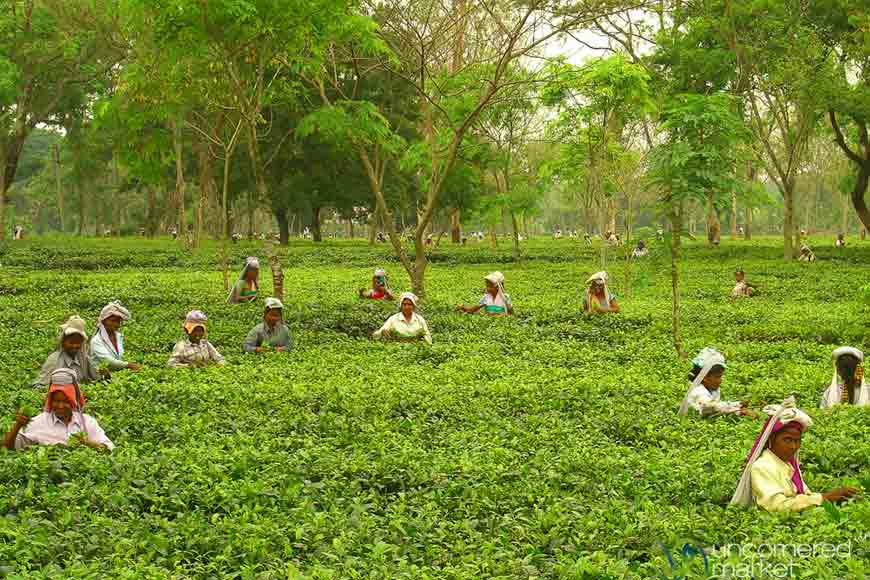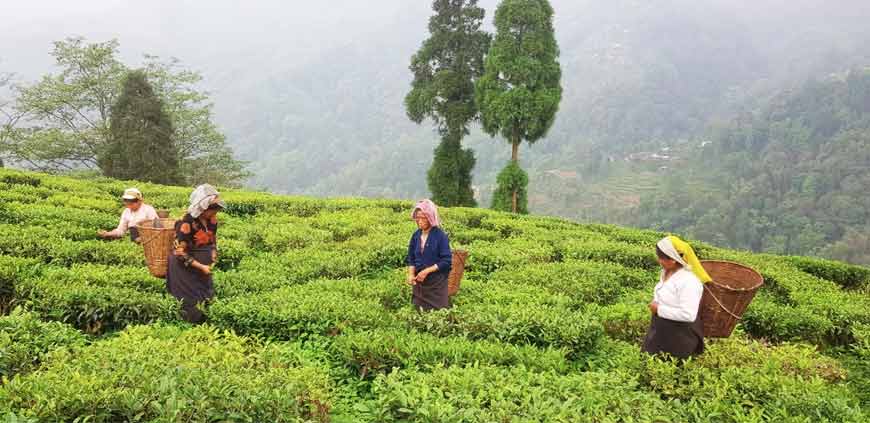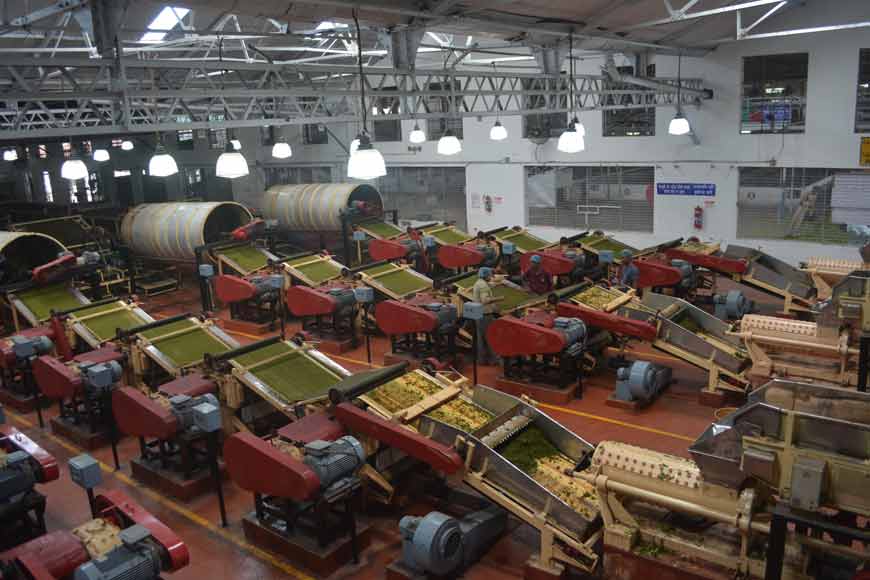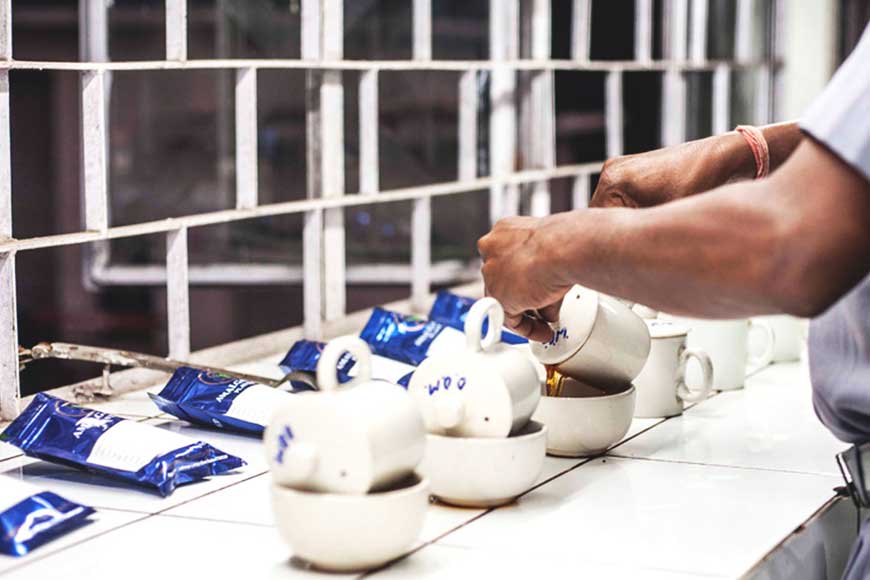Branded Dooars Tea set to be your next brew

Have you ever been offered a Dooars variety tea by any of the cafes worldwide, leave alone the star hotels and resorts that you have been visiting? Probably not. This Bengal variety has not been patronized much by the garden owners or the large consumer brands dictating the market.
On this International Tea Day, such an initiative by Teas from India is expected to inspire and encourage other garden owners and marketers to explore the huge potential of our hitherto neglected Bengal variety of tea.
Darjeeling Tea with all its delicate flavour has always ruled the roost with Assam CTC coming second but when it comes to Dooars Tea variety that had gained fame during British Raj, this Bengal variety is far from getting the right kind of eyeballs from the marketers. Kamalesh Bose, a veteran Darjeeling tea planter says with a shine in his eyes “Darjeeling Tea is like expensive champagne, it is class apart. Dooars Tea can never even come as a second choice to it, not even can compete with Assam CTC, primarily because Dooars does not have the conducive climatic and soil conditions that can carve out a niche tea to be liked the world over.”
There is nothing much to challenge his view. Darjeeling, located in the eastern part of India with its beautiful ridges, right kind of weather and the antiquity that it has is one of the best places to visit. But keeping all aside, one has to admit that it is “Darjeeling tea” which made the place famous to the world. It is certainly the best in the world and is undoubtedly considered as the crown jewel among all the tea varieties available in the world market.
But what about Dooars, an integral part of our State with hundreds of sprawling gardens where Teas are grown at elevations ranging from 90 to 1750 metre above sea level?

But what about Dooars, an integral part of our State with hundreds of sprawling gardens where Teas are grown at elevations ranging from 90 to 1750 metre above sea level?
The Dooars-Terai tea is characterized by bright, smooth and full-bodied liquor that’s a wee bit lighter than Assam tea.
...when it comes to Dooars Tea variety that had gained fame during British Raj, this Bengal variety is far from getting the right kind of eyeballs from the marketers
Nestling just below Darjeeling, at the Himalayan foothills, is a land shared by jumbos, rhinos, deciduous forests, gurgling streams and tea. The tea-growing areas in the district of Jalpaiguri, West Bengal, along with a small part of Coochbehar District, is popularly known as Dooars, which is bound by Bhutan and Darjeeling district in the northwest, Coochbehar district and Bangladesh in the south and Assam in the east. Dooars (which means doors in Bengali, Assamese and Nepali) is the gateway to the North East and Bhutan. Although tea cultivation in Dooars was primarily engineered by the British planters through their agency enterprises, there was significant contribution of Indian entrepreneurs who set up considerable number of new plantations with the issuance of grants of lands in a phased manner.The Dooars tea started off on a healthy note but years of neglect by planters with lack of technology to make the quality of the soil better, adverse climatic situations, it seemed to have almost lost the race.
The best edge of Dooars Tea is that it is cheap, compared to any other tea and hence has a big market in the local region for sure. Bose states “in the early years Dooars Tea even was exported to countries like Russia but soon lost its lustre as foreign customers preferred Assam CTC over Dooars Tea.” In late 80s and early 90s Russian blenders owing to cheap price of Dooars Tea used it to blend with high grade Assam CTC. But the death blow came in 1991 when the Indo Soviet Bilateral Trade Agreement ended with collapse of Soviet Union.

This agreement had ensured Dooars Tea was priced much below Kenyan CTC and enjoyed a favourable currency conversion at home. However, when the treaty ended, Kenyan CTC with superior quality became cheaper than Dooars Tea and Russian blenders stopped buying Dooars Tea. Around 100 million kgs of tea from Dooars was exported in early 1990s. But today it is no more an exportable item.
In late 80s and early 90s Russian blenders owing to cheap price of Dooars Tea used it to blend with high grade Assam CTC. But the death blow came in 1991 when the Indo Soviet Bilateral Trade Agreement ended with collapse of Soviet Union.
Darjeeling's tea industry is feeling the heat of the Russia-Ukraine war, as European buyers are not keen to lift the commodity due to depreciation of the euro that has made imports more expensive for them.https://t.co/eUQtFmUbn6
— Lakshmisha K S (@lakshmishaks) May 17, 2022
Industry officials and garden owners are of the opinion that the primary reason for Dooars Tea fetching lower prices than Assam CTC is the quality of the yield. Due to a better elevation, proper drainage and superior soil quality, Assam Tea is full bodied and wholesome, but Dooars Tea that is cultivated on a much lower elevation faces the roadblock of soil depletion and apathy of garden owners who do not invest to raise the quality of the soil and protect it from leaching. As per industry estimates the average yield per hectare is about 2,200 – 2,400 kg in Assam, the same in Dooars is 1,200-1,500 kg per hectare making Dooars Tea costlier to produce, though it does not fetch a high price in the market.

It is heartening to see companies coming forward to revive and brand the Dooars variety from Bengal. Amalgamated Plantations Pvt. Limited, a part of TATA group of companies, headquartered in Kolkata, through their brand ‘Teas from India’ has taken a positive initiative in branding the variety and putting it on the shelves and also reaching the consumers through their e-commerce platform. With their vast experience in producing tea in Dooars and although knowing that this tea was always been used as a filler because it has no definite taste of its own, rather it takes up taste of the leaves it is blended with, this initiative from ‘Teas from India’ only re-emphasises the company’s long term goal in making Dooars a sought after brand in a specific market segment.
It is heartening to see companies coming forward to revive and brand the Dooars variety from Bengal.
The company has branded and launched a few varieties of Dooars Tea under the name of ‘Delightful Dooars’.(https://teasfromindia.com)
On this International Tea Day, such an initiative by Teas from India is expected to inspire and encourage other garden owners and marketers to explore the huge potential of our hitherto neglected Bengal variety of tea.
In the near future do not be surprised to see this variety as your next brew in the morning cup.










